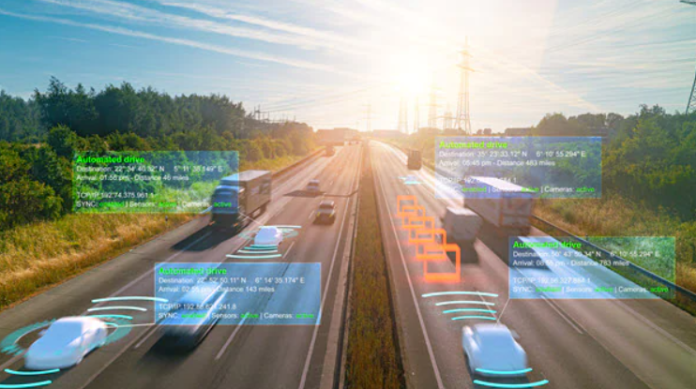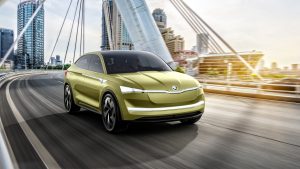Courtesy: Mouser Electronics
The automotive industry is experiencing a revolution. Manufacturers are constantly developing new technologies for their vehicles. Whether they are improving safety, delivering greater performance, or increasing passenger comfort. Of all these innovations, perhaps the most important has been the growth of electric power.
Electric power has been the key trend in transportation for the first few decades of the 21st Century. Using electricity as the motive power for cars is not a new development. At the dawn of the automotive age over a century ago, electricity competed with gasoline, and even steam, to become the dominant technology. As history has shown, gasoline won the battle and we have been dependent on fossil fuels ever since.
The Challenge for Battery Technology
The main reason gasoline has come to control the mobility industry is energy density. Gas and diesel deliver much energy from a relatively small volume and weight. Modern family cars carry around 60 liters of fuel with a mass of just 45 kilograms, sufficient to take the vehicle nearly 1000 km. Refuelling the car is quick and efficient, taking just a few minutes at any of the thousands of service stations on our roads.
The available battery technology could not deliver the same performance for many years. Even with the developments in Lithium-ion (Li-ion) batteries, until recently, an equivalent electric car would struggle to provide the same range. This perceived lack of performance could create a significant barrier to adopting electric vehicles.
However, the increasing appetite amongst consumers for alternatives to fossil fuels is driving modern battery technology. In addition, businesses and governments are investing in a network of fast charging stations to make electric vehicles a practical alternative to gasoline and diesel. Lithium-Ion batteries also promise to revolutionize other areas of the automotive industry, from commercial vehicles to construction equipment.
New Ways to Use Cars
The rise of electric power, driven by improved battery performance and the rapid growth of the infrastructure for electric vehicles, is not the only key trend in the automotive industry today. While privately-owned cars will not disappear, new technology will change how vehicles are designed and used.
The future of mobility will be delivered by fleets of autonomous electric vehicles employing the latest artificial intelligence and connected wirelessly to high-speed internet services. The result will give rise to Transport as a Service (TaaS). TaaS will see a gradual reduction in traditional car ownership. Instead, individuals will use connected technology to purchase trips or miles as they are needed.
The growth of new usage models has not been limited solely to traditional cars. In today’s congested cities, many authorities are introducing legislation to restrict the use of cars in city centers, replacing them with public transport. In this environment, a need exists to provide commuters with mobility for what is known as the last mile. The last mile is the name given to the final part of any journey from the bus stop or subway station to the destination.
Into the City
In cities where the use of full-sized vehicles is impractical or even forbidden, traditional cars are being replaced with electric scooters and bicycles, often known as e-scooters and e-bikes. Modern e-bikes and e-scooters are especially attractive solutions for cities, providing a pollution-free, accessible, and convenient solution for commuters. E-bikes are typically found at fixed charging stands near high-traffic areas such as subway stations and bus stops. Commuters use an app to rent the bikes, returning them to any fixed locations around the city.
In contrast, e-scooters are typically described as dock less. E-scooters are designed to be left around the city, allowing them to be rented for as long as needed before being left for the next user. Equipped with GPS tracking devices, scooters are collected at the end of the day by city authorities and taken to a central location for charging and maintenance. They are then returned to the streets, ready for the next morning’s rush hour.
These new commuter solutions have taken advantage of the improved Li-ion battery technology that has emerged from the automotive industry. They offer an ideal combination of compact size, moderate weight, and energy capacity for the city environment. Although these vehicles are intended for short urban journeys, their design must provide the same level of safety as traditional electric vehicles.
Lithium-ion batteries are the best solution for these mobility applications, but designers need to be aware of their limitations, including their effects on the environment. Li-ion batteries work best in conditions that their human users would find comfortable. Extreme temperatures adversely affect their performance, and they are at risk from water intrusion, which can cause damage to the structure of the battery and lead to a fire. Fires in Li-ion batteries can result in a dramatic event called a thermal runaway.
The Importance of Battery Management Systems
Care must also be taken when the battery is connected for charging. A Li-ion battery pack is made up of individual cells. If one cell is damaged, it might not be able to accept the same charge as its neighbours. To counter this, electric cars employ sophisticated battery management systems (BMS) designed to ensure that the battery pack is charged safely and repeatedly. While e-bikes and e-scooters provided by municipal mobility schemes will use similar robust BMS, some cheaper examples may not, placing the user at risk.
Conclusion
Concerns over the environmental impact of fossil fuels have seen the rapid growth of electric vehicles. In towns and cities worldwide, this means adopting new e-mobility solutions using a TaaS model and powered by Lithium-Ion battery solutions that have matured over the last decade. However, Li-ion battery packs have limitations, so it is vital to use robust and reliable battery management solutions to provide the reliability and safety your customers deserve.









